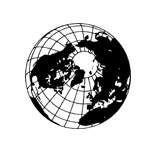Itämeren aleneva suolapitoisuus muokkaa Suomen rannikon lajien levinneisyyttä
Keywords:
Baltic Sea, Itämeri, salinity, suolapitoisuus, biodiversity, biodiversiteetti, climate change, ilmastonmuutosAbstract
The physical and chemical properties of water are vital for aquatic organisms. Should changes in these conditions occur, responses would follow both in the distributions of species and ecosystem functioning. Water salinity is particularly critical because it induces osmotic stress and requires specific physiological adaptations from the living organisms. Current climate change models suggest increasing precipitation in the Baltic Sea catchment area and decreasing seawater salinity along the Finnish seacoast. In order to envisage potential consequences of decreasing salinity in the coastal ecosystems, we apply alternative Baltic Sea salinity scenarios based on climate change and species inventory data with GIS modelling to estimate possible changes in the distributions of four aquatic species within the next 50 years. The results suggest that marine species are to lose much of their current distribution areas: blue mussel may constrain its distribution into the Archipelago- and Bothnian Sea areas only, while eelgrass will likely disappear completely. In contrast, the studied freshwater species, brackish water sponge and the common water mosses, will strongly expand their distributions along the Finnish seacoast. Their currently isolated populations in the Gulf of Finland and the Gulf of Bothnia will expand their populations as far as the Archipelago Sea, which will thereby become a biogeographically interesting contact zone. As many of the studied organisms are keystone species, their changing distributions will induce cascade effects at the ecosystem level.


.png)






